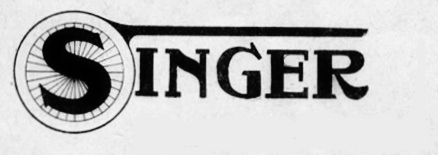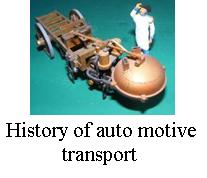
The kit does not claim to be any particular brand but does bare a striking resemblance to the Singer models of 1883 to 1884. George Singer founded the Singer marque in 1875, Singer & Co, to make bicycles. He was a philanthropist and took great care of his workforce as well as encouraging them to take part in a variety of sports including Cycling, Cricket, Athletics and even a Rugby Union Team. The 1883 ‘Singers’ Football Team became the Coventry City Football Club in 1898. He also stood for civic office and was Mayor of Coventry three times.
A pioneer of both cycle and automobile development the development of curved front forks were attributed to him. His business was very successful and as Kings, Queens, Emperors and Princes took to cycling he basked in their reflected glory.
At that time ordinary bicycle, high wheeler, or Penny Farthing as it has become known to us, were made to measure as front wheel size was dictated by the inside leg measurement. The very large front wheel had the pedals fixed to it which meant that speed was dictated by the size of the wheel and while the large wheel helped to minimise road shocks it made the machines difficult to mount and hazardous to ride. The modern cycling parlance of refering to gear ratios as length in inches is a direct through back to the measured size of a front wheel on a Penny-farthing.
Only by a series of developmental increments did the bicycle as we know it come into being. Singer's contribution to this process was the 1878 'Xtra Ordinary' bicycle, patented on 24th October 1878, used a system of lever cranks to push the front wheel round. This allowed the rider to sit lower down and further back on the machine making the mounting process easier as well the lowered centre of gravity making the machine more stable to ride.
The importance of the penny-farthing is the improvements in metallurgy which allowed a strong light frame to be made from hollow steel tubing. The penny-farthing would not have been possible without the tensioned spoke wheel invented by Frenchman Eugene Meyer in 1869. Ball bearings made rotating unions smoother, rubber pedals gave more grip and solid rubber tyres cushioned the ride far more than metal rimmed wheels. Suddenly bicycles were lighter and smoother to ride than ever before and these design/invention steps would directly come to bare in Benz first three wheeled car.
The Singer & co. itself would go on to produce their first car in 1906.





1/24th scale kit
Built by Shinichi Iwami


This model, Aerobase kit #K003, was presented to us by Shinichi Iwami at the 2015 Scale model world show and is from his company's range of historic bicycle kits in 1/24th scale. It is made from very strong laser cut industrial vulcanized fibre, a form of paper. Surprisingly the narrow parts, such as the spokes, have the strength of metal, yet they can be cut with an ordinary modelling knife.
As it is paper it can be stuck with almost any ordinary paper glue but you have to remember the material is paper and as such moisture will warped if too much glue is used. It does take some skill as you really only get one shot at gluing it together, trying to take it apart and realign parts is risky so you have to be patient when building these models. Best advice is to use small amounts of glue applied with a toothpick
Currently there are six models in this range giving a clear idea of the evolution of the bicycle.
RETURN TO :-

